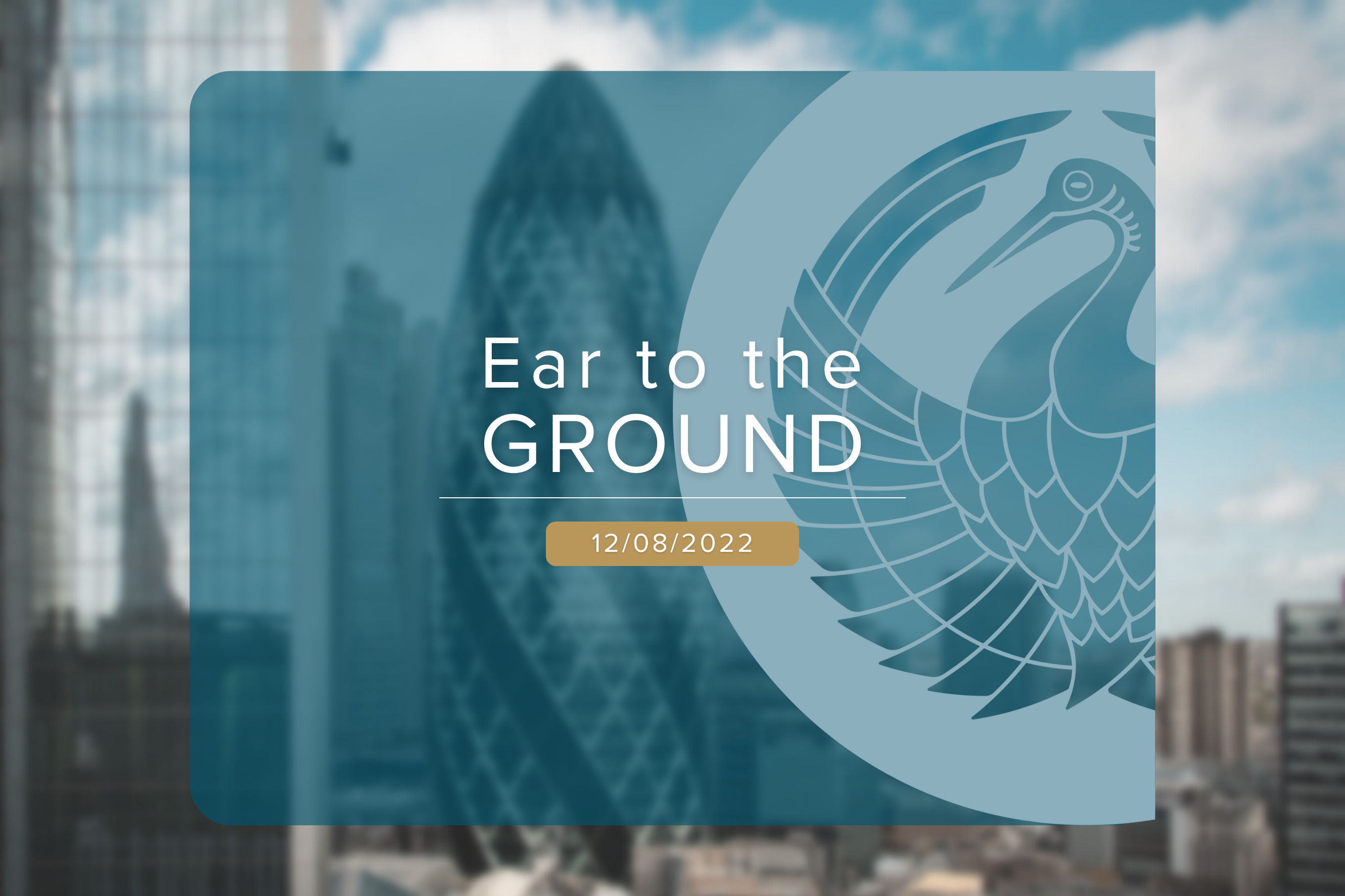Ear to the ground
12 August 2022

Droughts, blackouts and potentially an inflation top out. With the UK and Europe in the midst of another heatwave we are hearing of more hose pipe bans and of reservoirs drying up. In Europe the shortage has the potential to become the regions next big enemy. It is reported that water levels in Europe’s major rivers, including the Rhine have dropped to record levels. This means that certain ships are unable to navigate these waters. Eurostat estimates that shipping routes add $80bn to the eurozone economy.
The UK meanwhile is planning for potential blackouts in January. Under a “reasonable worst case scenario”, the government estimate that we could see an electricity capacity shortfall which could mean there is a need for organised blackouts, potentially for four days. This would undoubtedly lead to a fall in productivity and therefore a slowdown in the UK economy. If authorities in the UK are already asking themselves this question, I think it is fair to assume that other countries are too.
Sticking with the UK, the economy contracted 0.1% quarter on quarter in the three months to June. This was the first contraction the economy has seen since the first quarter of 2021. Although a contraction, it was not as bad as forecast, with a 0.2% fall having being predicted. Services fell by 0.4%, but it was not all bad news in the sector, with positive contributions coming from activities such as travel agencies and tour operators, accommodation, entertainment and recreation. In a sign that the higher cost of living continues to bite, we saw a 0.2% decrease in household consumption.
In the US meanwhile we saw the release of July inflation figures. This slowed by more than the market had forecast, coming in at 8.5% against a consensus forecast of 8.7%. Core inflation, meanwhile, excluding the volatile food and energy components, held steady at 5.9%.
The softer than expected inflation figures now leads the market to believe that the chances of a further 0.75% rate increase at the next Federal Reserve meeting have reduced, with a 0.5% hike the now more favoured outcome.
The question being asked by investors therefore is whether we are seeing something of a dovish pivot from the central bank, or whether we are simply seeing a more data conscious approach before the magnitude of rate hikes is decided. The latter certainly seems realistic given the decision not to give forward guidance as to what the next interest rate move will be.
A 0.5% interest rate hike pales into insignificance when compared to the latest interest rate hike delivered by the central bank of Argentina. At its meeting this week it hiked by an eyewatering 9.5%, taking their main interest rate up to 69.5%. This was their eighth hike this year as they aim to try and bring down inflation, which currently stands at an annual rate of 71%! The problems facing the US, UK and Eurozone central banks all of a sudden don’t seem so bad.
This article is for information purposes only and should not be construed as advice. We strongly suggest you seek independent financial advice prior to taking any course of action.
The value of this investment can fall as well as rise and investors may get back less than they originally invested. Past performance is not necessarily a guide to future performance.
The Fund is suitable for investors who are seeking to achieve long term capital growth.
The tax treatment of investments depends on the individual circumstances of each client and may be subject to change in the future. The above is in relation to a UK domiciled investor only and would be different for those domiciled outside the UK. We strongly suggest you seek independent tax advice prior to taking any course of action.
Subscribe Today
To receive exclusive fund notifications straight into your inbox, please complete this form.